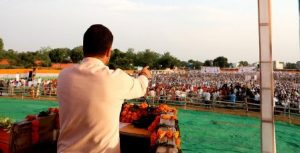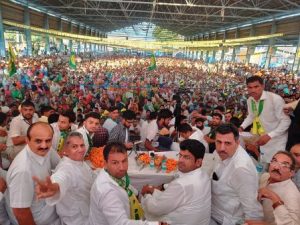Assembly Elections 2019: Where Lies the Issues?
Maharashtra and Haryana go to polls on 21 October, but have the political parties in the state fought the elections on issues?

After the long-drawn elections earlier this year, the country is bracing itself for yet another round of elections. This time, it is elections to the State Assemblies in Maharashtra and Haryana.
So, as we plunge into another round of electing political representatives in two states of the country, a big question one needs to ask is whether the election in any way reflects a collective vision for a better, growing India? And are the political leaders and parties doing their bit in providing the electorate with such a vision?
Any Takers for Unemployment, Rural Distress or Women’s Safety?
Star-studded, huge rallies are the norm for most of the parties. It is generally expected that in these meetings, the parties and candidates will put forth the various ways in which they aim to tackle the issues the country face. To think of it, there are a number of issues that the country is in fact, facing. The Periodic Labour Force Survey (PLFS) of the National Sample Survey Office (NSSO), published in June this year, showed the unemployment rate in the country in FY 18 at 5.3 percent in rural India and 7.8 percent in urban India, resulting in an overall unemployment rate of 6.1 percent. The unemployment rate in the poll-bound state of Haryana is also high. In fact, data shows that the state has recorded one of the highest rates of unemployment in the country.
Also Read : What Could Be The Public Agenda For The Modi 2 0 Government
Rural distress and farm crisis may be termed as a grim reality facing the country, as was attested by the huge farmer rallies that took place in Maharashtra and near Delhi in the past year. In the assembly elections for five states, including Madhya Pradesh, Rajasthan and Chhattisgarh last year, the Congress promised a full waiver of farm loans within the span of 10 days of coming to power. However, none of the states has implemented the promise until now. This time the party has promised a better timeline. The party has promised to waive off the farmers’ loan if elected to power within 24 hours. But the question remains, are the farm loan waivers a feasible way to end the distress plaguing rural India? Rather than waiving off the farm loans, there is a greater need to address the declining incomes in the rural sector of the country. A Reserve Bank of India (RBI) working paper published in 2018 pointed out that rural wage growth has witnessed a significant decline since 2014.
And in order to alleviate the rural distress and increase the rural wages, the farm loan waiver cannot be an effective solution.

Representation of women and measures to make their safety a priority is one of the most sought after promises made during elections. In its manifesto for the Haryana elections, the Bhartiya Janata Party (BJP) has promised to launch a pink bus service, install sanitary napkin vending machines, open self-defence training schools and fast-track courts for hearing cases pertaining to crimes against women. All of these are definitely welcome measures but they are nothing new. It would be interesting to see the difference they make on the ground for the women in Haryana, a state with the lowest sex-ratio in the country. While women’s issues are poll-issues, their representation is certainly not, as parties across the spectrum lack adequate representation of women. In Haryana, a state with 90 seats, the BJP has fielded 12 women candidates, the Congress has 10 women candidates, and the highest representation to women has been given by the Indian National Lok Dal (INLD) which has fielded 15 women candidates.
Who Talks About Any Issue?
In an election rally in Maharashtra, Congress leader Rahul Gandhi called Prime Minister Narendra Modi ‘the loudspeaker of the rich’. His speeches focused on targeting the Modi government on issues such as unemployment, agrarian distress, the crisis in various small-scale industries. While that is what an able opposition must engage in, it is also interesting to see that the opposition parties seem devoid of any new ideas or narratives at all.
Also Read : Odishas Political Branding And Voting Behaviour Recent Trends
The opposition itself cannot get away from its own role at giving viable alternatives to the electorate.
The abrogation of Article 370, which saw the status of Jammu and Kashmir changed to that of a Union Territory from that of a state, is an issue that the BJP is highlighting again and again, from rallies in Maharashtra to Haryana. Many opposition leaders have called out of the futility making the Article 370 a poll issue in other states, and rightly so. However, does the opposition have an alternative narrative that can actually be effective in bringing a change, so that the elections and the relevant issues can be highlighted.
With each passing election, Indian elections seem to become more and more personality-driven. However, in a growing and developing country like India, it should be issue-based rather than cult based.
